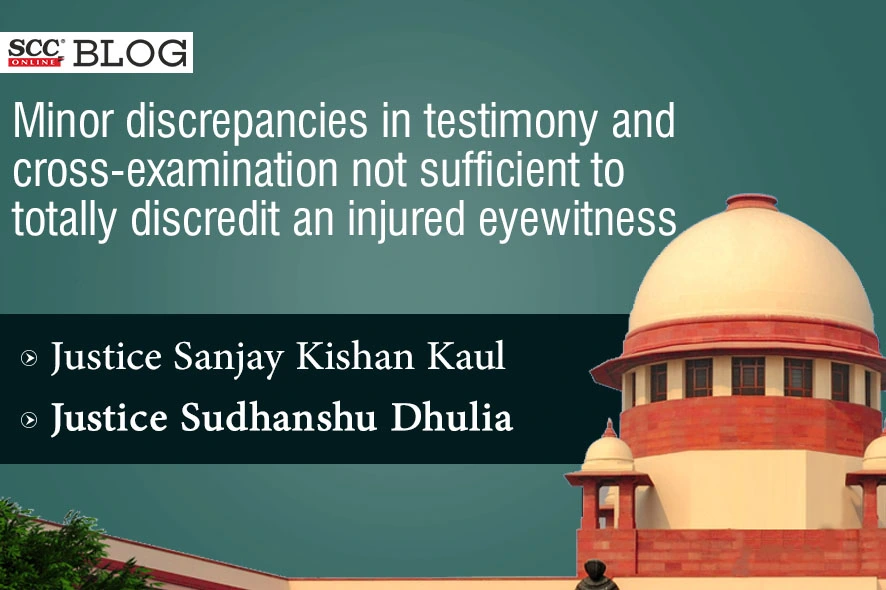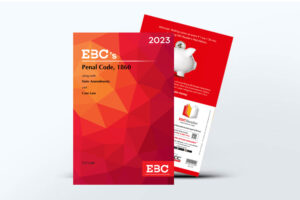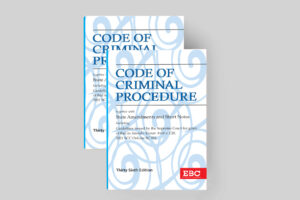Supreme Court: In twin appeals against judgment and order passed by Rajasthan High Court on 8-08-2007 acquitting all the accused persons for major offences under Sections 302, 307 but convicting for Sections 323, 324, 325, 447, 147/148 read with Section 149 of the Penal Code, 1860 (‘IPC’) while also reducing their sentence to the period already undergone, the Division Bench of Sanjay Kishan Kaul and Sudhanshu Dhulia*, JJ. did not concur with the High Court’s view discrediting evidence of deceased’s wife, who was also injured in the said incident. The Court held that the minor discrepancies in her statement made before the police and the cross examination could not be the reason for completely discrediting her evidence.
Factual Background
The Trial Court had convicted them all for offences under Sections 302, 307, 323, 324, 325, 447, 147/148 read with Section 149 of IPC. As mentioned before, the High Court acquitted under Sections 302, 307 and convicted under Sections 323, 324, 325, 447, 147/148 read with Section 149 of IPC. The complainant and State approached the Court through instant appeals.
A First Information Report (‘FIR’) was lodged on 22-05-2001 which disclosed that when the informant’s uncle and aunt were working in their agricultural field, seven men armed with weapons approached their field and started assaulting them and they got grievously injured and the incident was witnessed by several relatives who tried to intervene but failed. Informant’s uncle died on his way to hospital in the ambulance, while his wife got grievously hurt. Several witnesses were examined by the prosecution, while clothes and weapons were also recovered.
Court’s Analysis of Evidence of Injured Eyewitness
The Court regarded the deceased’s wife’s testimony as the most credible evidence for prosecution case since she accompanied the deceased in the field at the time of incident and sustained near fatal injury on her head and several other injuries, who was cross-examined at length by the defense, but nothing came out in the same except a few minor discrepancies.
The Court noted that the said discrepancies were relied upon the High Court while acquitting the accused for charges under IPC Sections 302 and 307 and expressed that “the social background and the overall surrounding circumstances of the case are important considerations for the court while examining a witness, which has not been done.” The Court perused the statements of deceased’s wife for sequence of events who gave clear and unambiguous stetement, and evidence of other witnesses to comment that them witnessing entire sequence of events may be doubtful, but them seeking the assailants fleeing from the place of occurrence was confirmed, which made them important witnesses, but the High Court ignored their deposition.
The Court expressed that “it is her husband who has been killed by the assailants. Why should she be accusing wrong persons?” and highlighted that the High Court discredited the star witness of prosecution due to so-called discrepancies between statement given to the police and the cross-examination, and held that ‘it was not a pre-meditated attack at all and therefore no case of common intention or common object of unlawful assembly is made out nor will it be a case for Section 302 or 307.’
The Court stated that “Statement given to police during investigation under Section 161 cannot be read as an “evidence”. It has a limited applicability in a Court of Law as prescribed under Section 162 of the Criminal Procedure Code, 1973 (‘CrPC’).” It went on to explain that “No doubt statements given before police during investigation under Section 161 are “previous statements” under Section 145 of the Evidence Act and therefore can be used to cross examine a witness. But this is only for a limited purpose, to “contradict” such a witness. Even if the defense is successful in contradicting a witness, it would not always mean that the contradiction in her two statements would result in totally discrediting this witness.”
The Court held that contradictions in two statements may or may not be sufficient to discredit a witness, Sections 145 read with 155 of Evidence Act, 1872 must be carefully applied in a given case. Coming back to the instant case, the Court accepted that “Some discrepancies invariably occur in such cases when we take into account the fact that this witness is a woman who resides in a village and is the wife of a farmer who tills his land and raises crops by his own hands. In other words, they are not big farmers. The rural setting, the degree of articulation of such a witness in a Court of Law are relevant considerations while evaluating the credibility of such a witness. Moreover, the lengthy cross examination of a witness may invariably result in contradictions. But these contradictions are not always sufficient to discredit a witness.”
The Court referred to Rammi v. State of M.P., (1999) 8 SCC 649 and Rammi v. State of M.P., (1999) 8 SCC 649 regarding contradiction in two statements for discrediting a witness and commented that in the instant case, the High Court lost sight of witness being an injured witness. The Court explained that as per Section 145 and 155 of the Evidence Act, the purpose of cross-examination of witnesses is to contradict the two statements of witness, and the instant case involved statement given before the police and the court. It expressed that assuming the difference in two statements, the same may discredit the beginning of incident but not the incident happening, and accused persons were the offenders also could not be doubted. The incident took place and resulted in one death and grievous injuries to another could not be doubted. The Court went on to say that the High Court gave undeserved credit to defense evidence regarding injuries sustained by two of the assailants, which lacked credibility as per the Trial Court finding the medical report suspicious not able to explain how the two accused sustained simple injuries. Thus, the Court expressed that the High Court went wrong in appreciating both the facts as well as the law.
The Court held the statement of an injured eyewitness to be an important piece of evidence, which cannot be easily discarded by a Court, and that minor discrepancies do not matter, and supported the said statement through State of M.P. v. Mansingh, (2003) 10 SCC 414. The Court cautiously opined that “the possibility of the incident not being premeditated, cannot be totally disregarded, considering the overall ‘circumstances’ of the case, as urged before us and even considering the contradictions in the two statements”, but refused to discredit the evidence of deceased’s wife but gave limited benefit of doubt to the accused based on those minor contradictions, while opining the case to be of culpable homicide not amounting to murder under Section 300, and not murder under Section 302 of IPC.
Therefore, the Court allowed both the appeals and set aside the impugned judgment and order and converted the findings of IPC Section 302 to Section 304 Part 1, and those of Section 307 to Section 308 of IPC. It sentenced all the accused persons to 7 years of rigorous imprisonment under Section 304 part I IPC and 3 years of rigorous imprisonment under Section 308 IPC and ordered that the remaining findings and sentences awarded by the Trial Court to remain, further directing the accused persons to surrender within 4 weeks except the one who passed away, whose case stood abated.
[Birbal Nath v. State of Rajasthan, 2023 SCC OnLine SC 1396, decided on 30-10-2023]
Judgment authored by: Justice Sudhanshu Dhulia
Know Thy Judge | The Remarkable Odyssey of Justice Sudhanshu Dhulia – from bar to bench
Advocates who appeared in this case :
For Appellants: Advocate on Record P.D. Sharma, Advocate on Record Milind Kumar
For Respondents: Senior Advocate Dr. Manish Singhvi, Advocate on Record Milind Kumar, Advocate on Record Dr. Charu Mathur, Advocate Shubhangi Agarwal, Advocate Neha Kapoor, Advocate H. D. Thanvi, Advocate Nikhil Kumar Singh, Advocate Achal Singh Bule, Advocate on Record Rishi Matoliya








